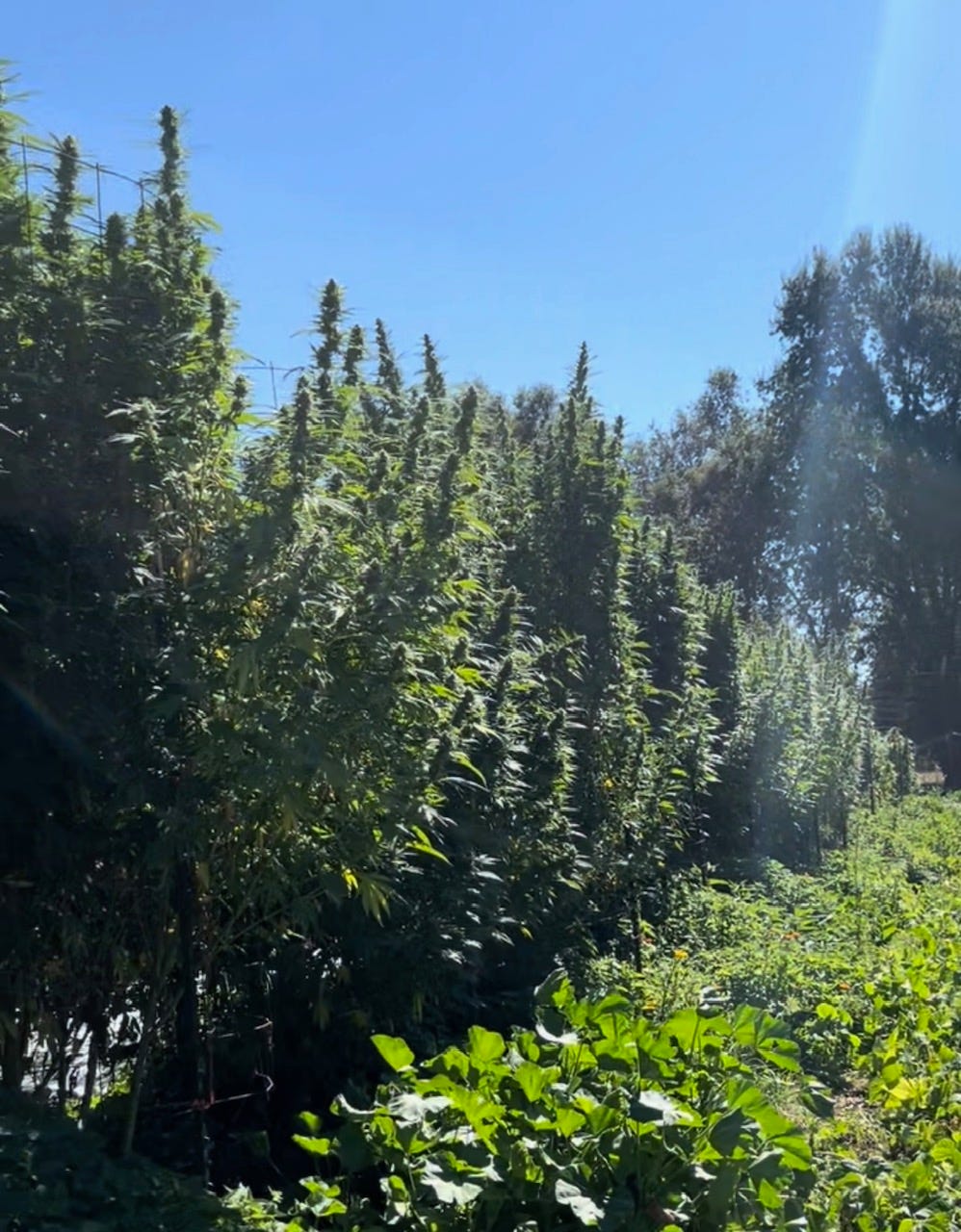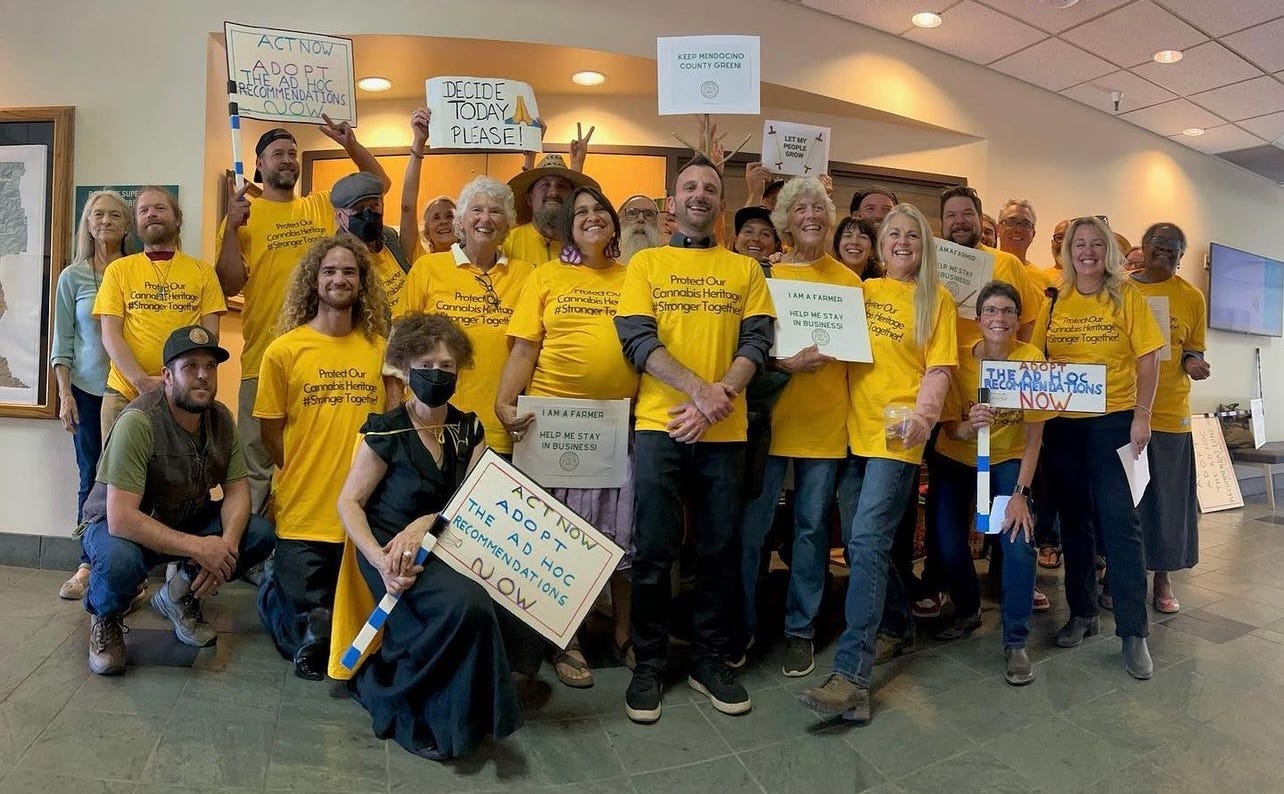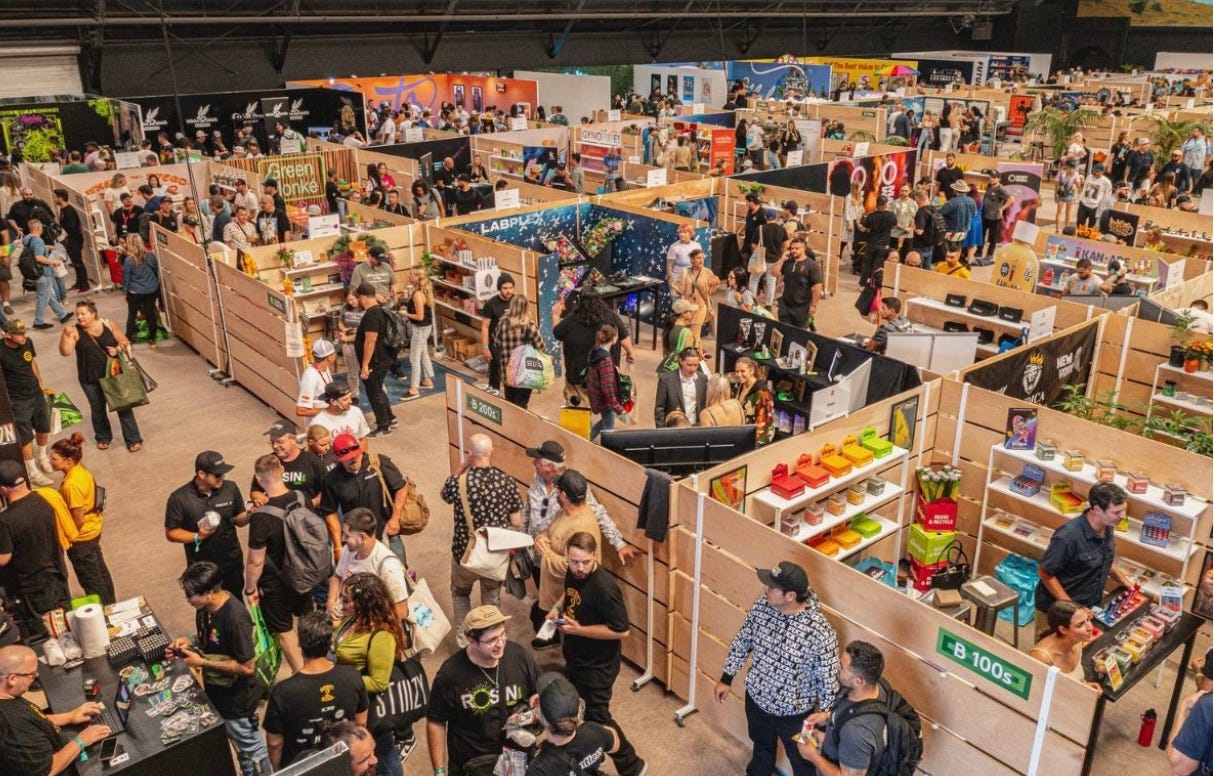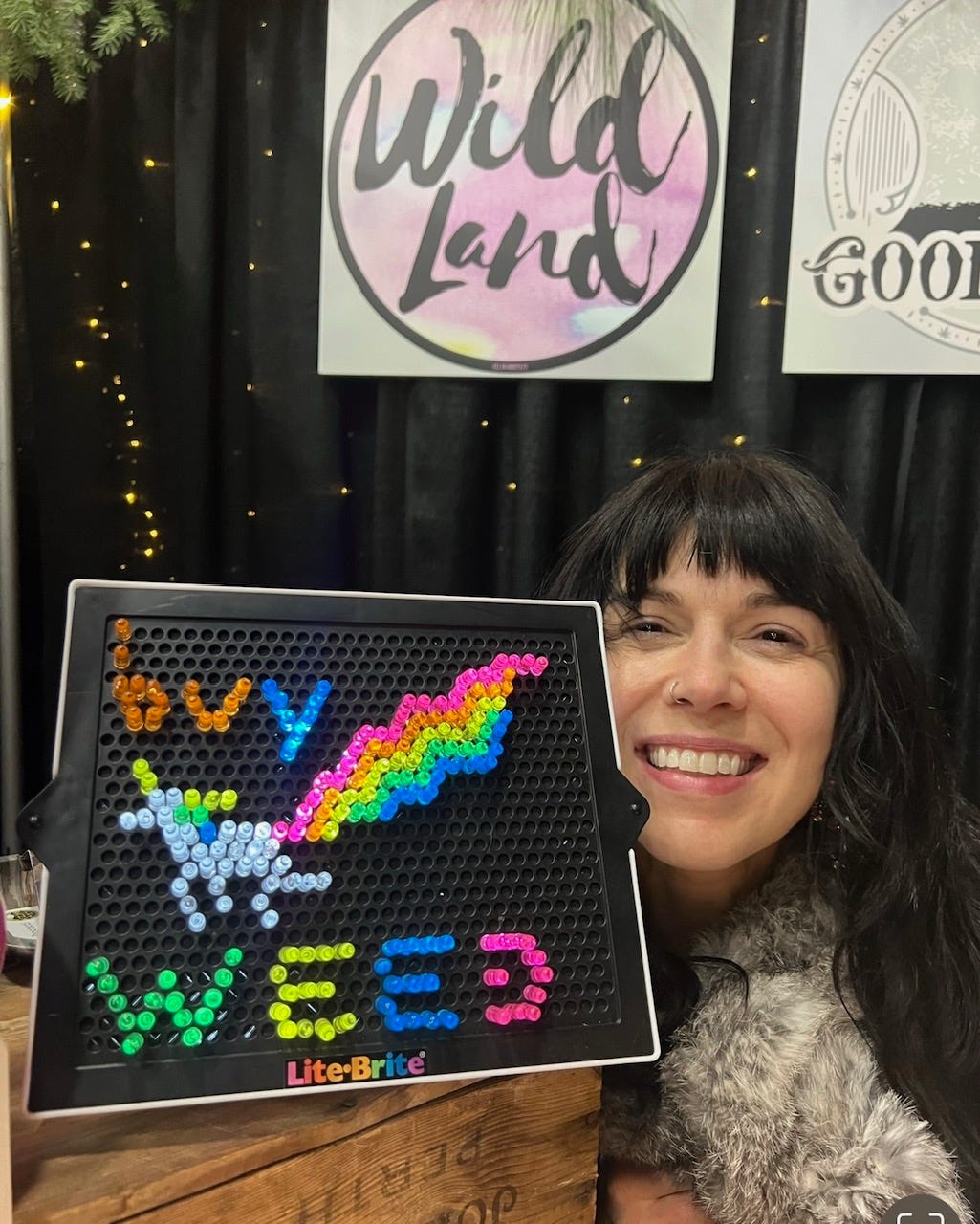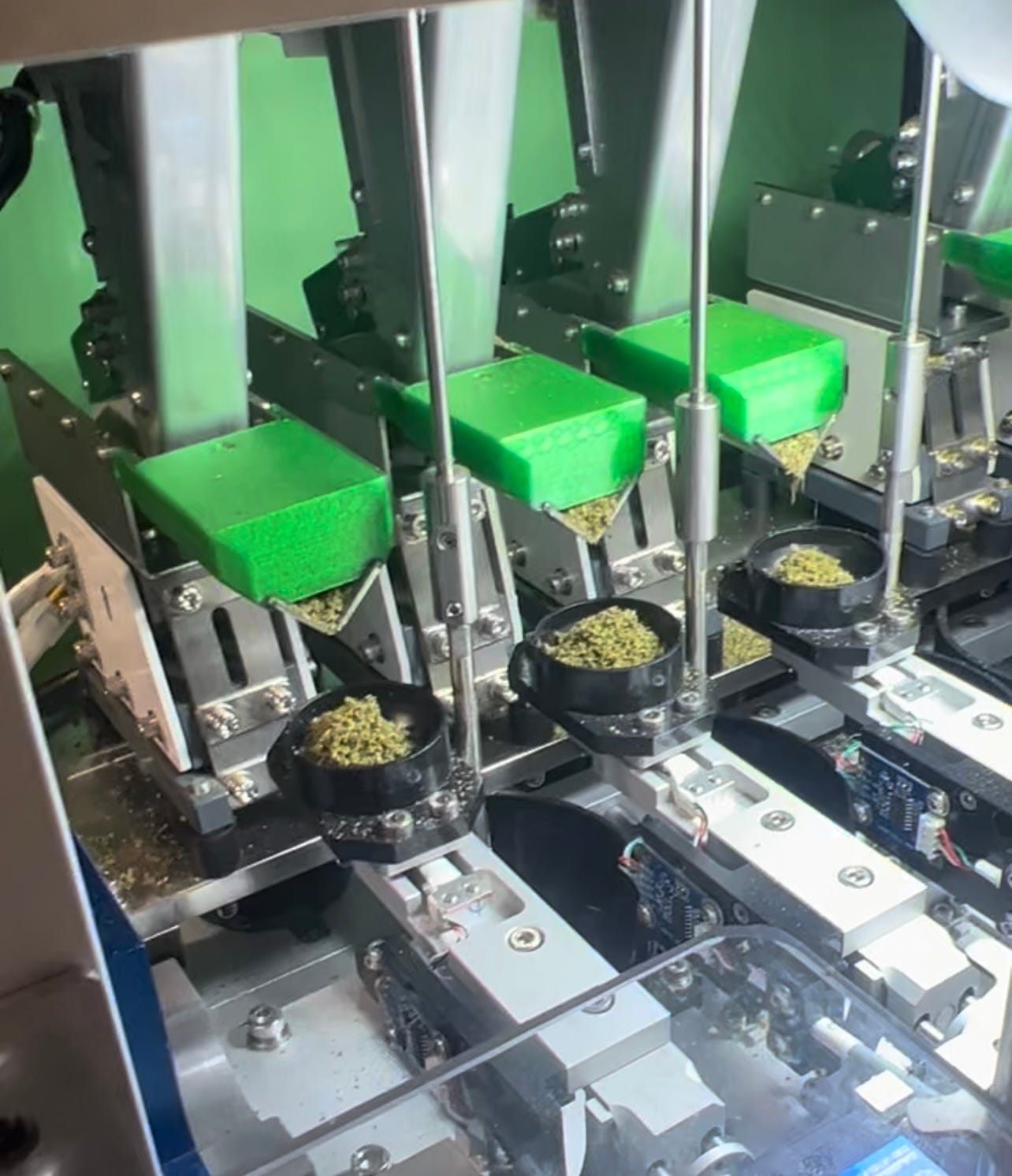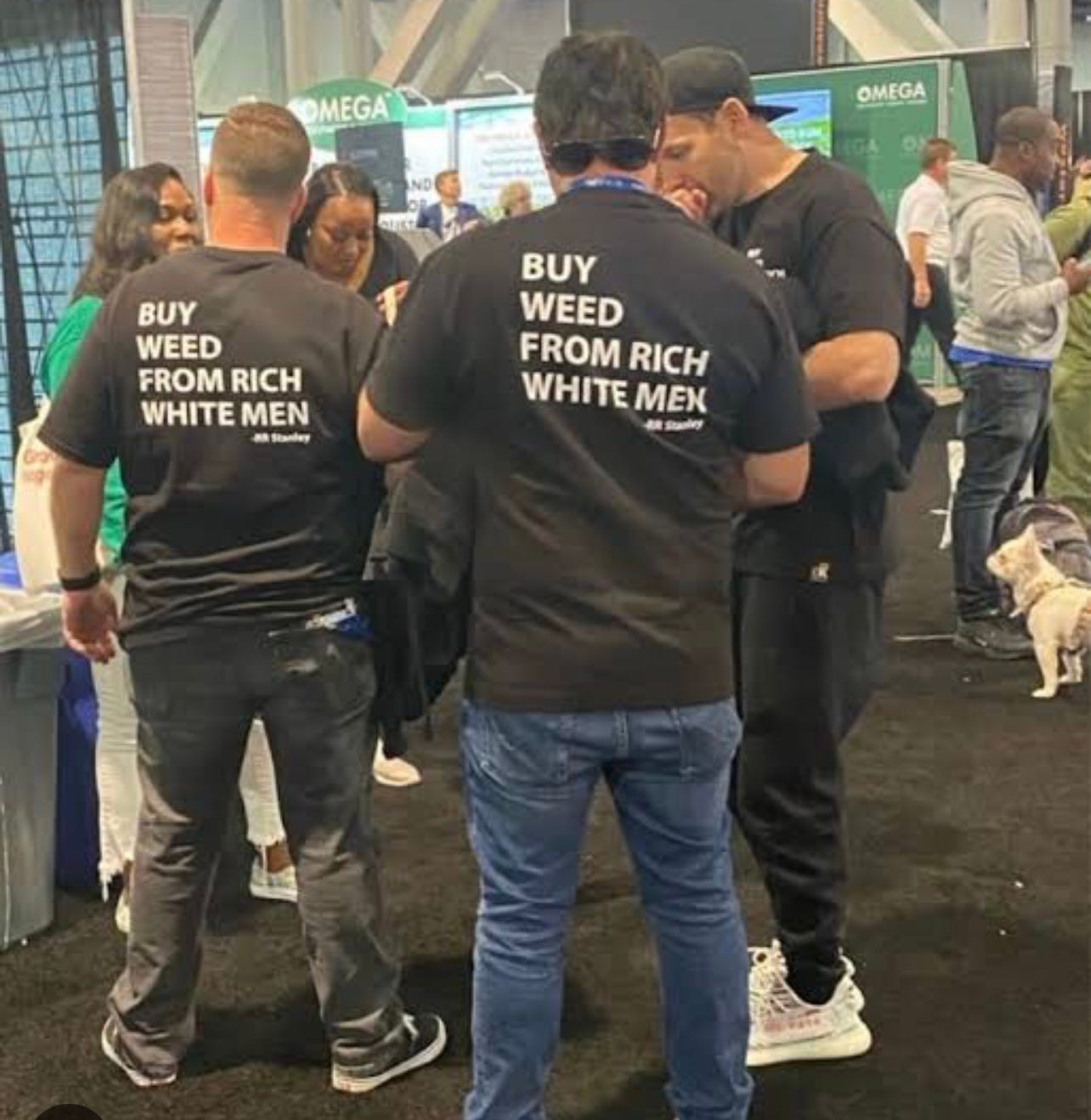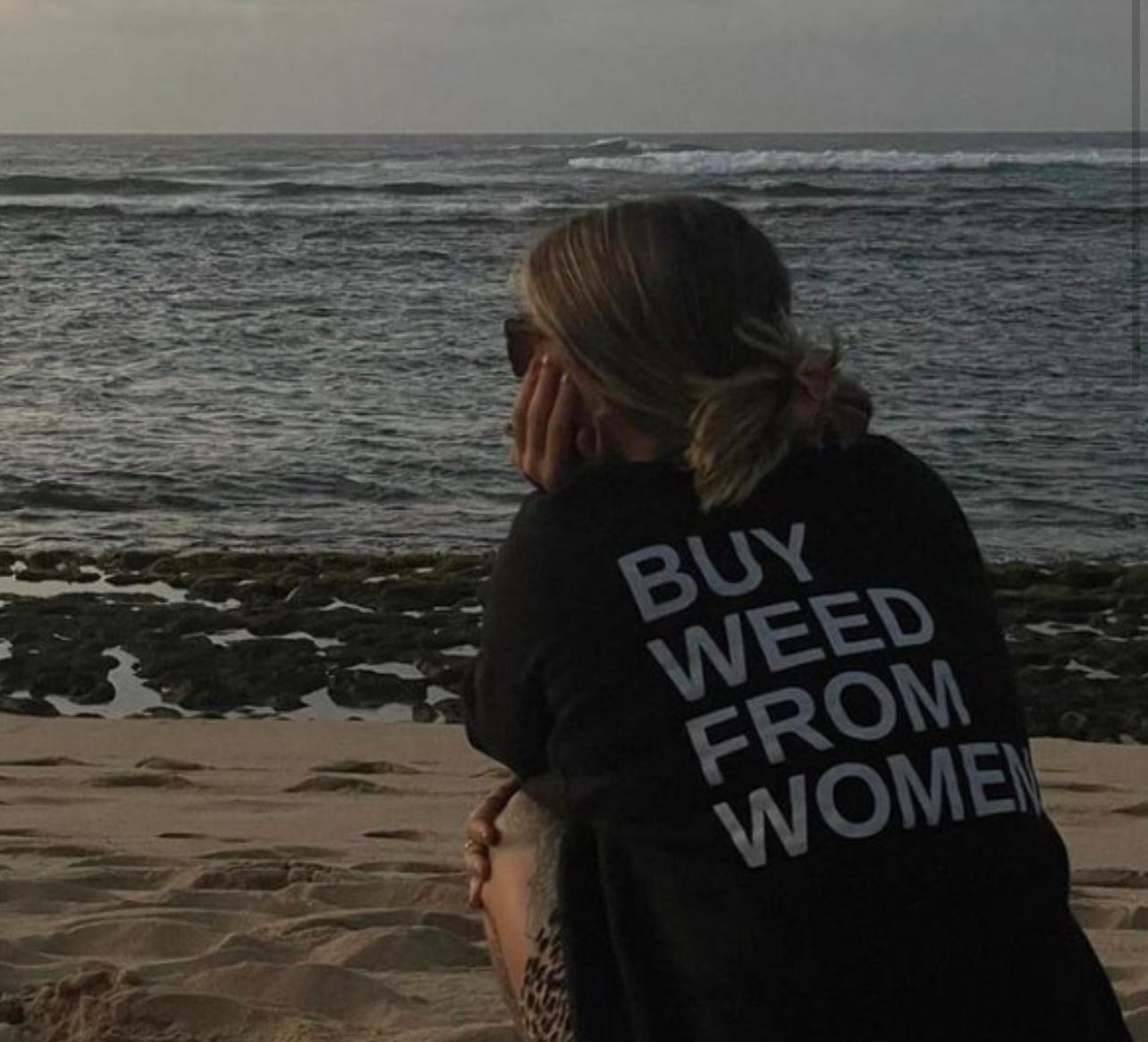Congratulations. You’ve made it this far in what we are now referring to as the Great Cannapocalypse.
If you work in weed and you’re still in the game, you deserve a year of free therapy and a fat fucking check paid on time, in full.
If you don’t work in weed, but like to smoke it—which I imagine you do if you’re reading this and subscribed to my newsletter—here’s a quick rundown of what’s going on in California’s cannabis industry (and beyond).
Between corporate consolidation destroying the craft market (the sector of the industry known for growing beautiful, small batch flower as opposed to churning out mid grade weed in a factory full of chemicals), impossible regulations for farmers, heavy taxation, no legal banking, and rigid censorship online—we’re in bad shape.
Viewed broadly as a roadmap of how not to structure legalization for emerging markets, the implosion of the Cali weed world has been widely dubbed a “mass extinction event.”
The Emerald Triangle, an area in Northern California known for producing some of the best weed in the world, is getting hit especially hard. The area is home to hundreds of family-run craft cannabis farms, all of which are grappling with the fallout from Prop. 64, and a system of regulations that appears to be rigged for their demise.
In Mendocino right now, for example, nearly six years into its local permitting process, legal cannabis cultivators are at risk of losing access to state licensing, which would force them to cease operations by July 1. The county has only transitioned six local farmers to state licenses, less than 1% of all cultivators in the county.
Race to the Bottom
In 2022, 32% of brands in California went out of business, according to Headset, a cannabis data analytics firm. But it’s not just California experiencing the tumult of an imploding industry—these issues persist throughout the national market as well.
Across all US markets, 29% of all brands that logged sales in 2021 appear to have shuttered in 2022. Part of this, of course, is due to the aggressive market consolidation by corporate cannabis, which is an issue in its own right.
People who know the most about the plant are being pushed out by a culture of Chads: slang for business people who know very little about cannabis. These greedy corporate bros then put themselves out of business by grossly overestimating their ability to scale a cultivation business of a psychoactive flower—one of the most complex plants in nature—while navigating the brutal, brackish market they are partly responsible for creating.
Last year, Canopy Growth, a behemoth Canadian operator backed by Constellation Brands, a global producer and distributor of alcohol brands like as Corona Extra, Modelo Especial, Svedka vodka, and Robert Mondavi wines, lost 200 million dollars in its third fiscal quarter, bringing their losses for the first three quarters of the year to 2.6 billion dollars. They also fired 800 people, and shuttered their headquarters and multiple cultivation sites, one comically touted as “the largest cannabis greenhouse in the world.”
These kinds of layoffs and cost cuts are present across the board of bloated corporate cannabis operations in North America, especially in the US market. Last month, Curaleaf announced it will shutter operations in CA, CO, and OR. Dutchie, Weedmaps, Trulieve, Leafly, Leaflink, and Green Leaf Medical have all announced mass layoffs and other forms of cost cutting.
On the Road Again
I’ve been covering the cannabis industry since 2015. It’s been a wild ride watching things unravel.
Gone are the mansion parties of 2017, the exploding sales of 2020, and the baller press giftings of 4/20s passed. Six-course weed dinners, posh press trips, and all of the other delightful trimmings of a bubble economy brimming to burst are now a thing of of the past.
There have been many times when doom hovered on the horizon like a storm in the distance we could see but not feel. But now everyone feels it, from CEOs and venture capitalists to the extremely stoned, multi-hyphenate creatives like moi.
Regardless of how many articles are published, how many sob stories make the rounds, and how loudly we scream for regulatory reform, things just seem to keep getting worse.
To get the full download on this current state of chaos, I followed the weed conference circuit from Hall of Flowers, California’s glitziest buyer’s market; to MJ Bizcon, the national cannabis business conference in Vegas; and to the Harvest Ball, the year-end small farm rager thrown by cannabis’ most prestigious awards show, The Emerald Cup.
Despite representing different ends of the market, Hall of Flowers and Harvest Ball had a lot in common this year. Both occurred at the same venue (Santa Rosa Fairgrounds) three months apart, and both felt a little heavier than years prior.
Instead of these events’ usual ethos as a who’s who in cannabis, this year felt more like who’s left?
Hall of Flowers represents the product-driven, often white-labeled brands that tend to be newer to the industry, and still have enough investment capital left to afford the astronomical cost of showing at HOF. After the $7,000 (or more!) booth cost, travel, lodging etc, HOF can easily run a brand up to $40k for a single show.
The lineup of brands at Hall of Flowers is a symbolic marker for the California product market in many ways. The event usually resembles a music festival where weed brands headline instead of bands.
Huge outdoor activations from the biggest names in the biz (along with hundreds of small brand booths in the fairground structures) compete for the attention of dispensary buyers. Gumball machines full of nugs, weed vending installations, giant inflatable joints, misty smoking lounges—you name it—they’re activating.
While the people who determine what’s on the shelves of your favorite weed store cruise around, I scurry from booth to booth collecting product samples like a feral child in a candy shop.
The stakes were high this year, with many brands viewing HOF as a last-ditch effort to generate sales before having to cease operations. It felt like the last inning of a championship game with the scoreboard tied.
A lot of the big name canna-brands were missing, especially in the outdoor activation area. Inside, where the less expensive booths were located, was packed.
Much to my dismay, people weren’t as interested in giving me copious amounts of free weed as they did in the past, but I still made off with a couple of duffle bags worth of product to write about and review for the next few months.
Conversations were dominated by a tone of how are you holding up? Brightness on the floor seemed to be reserved for lamenting the past rather than being hopeful about the future.
We still had fun, though, with most of my friends who own brands feeling the experience was well worth the investment.
Check out some of my favorite strains from Harvest Ball in the new episode of Hot Tokes with Oystergirl above!
The Harvest Ball had overall better energy because the people who go to this event are more in tune with the culture of cannabis and the plant itself than the majority of those who attend Hall of Flowers.
The Harvest Ball is the first official event of the Emerald Cup, the cannabis industry’s most esteemed awards show, which takes place in the spring.
December’s Harvest Ball is a celebration of hard work and the stellar weed that comes from it. Farmers and growers bring their new crops to sell, show, and celebrate. Weedy artists like E-40 and Channel Tres perform in the evenings. Everyone parties. It’s fun.
This year was a good reminder of the tenacity of the craft community and their unbridled love for the plant. The people who are still hanging on at this stage in the market really fucking care, which is a bit of a silver lining in itself.
Many of the green rush vampires who came in to make a buck at the expense of creating a negative impact on the industry have long gone.
For the most part, the people who’ve made it this far in the Mass Extinction Event, especially in the craft market, are here for love, not for money. (A little more money would be really nice, though!)
And finally, MJ-fucking-Bizcon, my own personal slice of hell. The largest cannabiz conference in the world takes place in Las Vegas each fall and caters mostly to people who view weed as a business instead of a plant.
Lasting almost a week, the Vegas convention center is overtaken by every B2B booth you can think of, from dystopian weed factory machinery to Bic lighters and blockchain businesses. Throughout the week there are tons of parties, events, and dinners. It’s exhausting.
I want to start by proposing we move MJ Biz OUT of Las Vegas. Vegas is the personification of the male gaze in city form, and I feel that having it in such a hedonistic environment activates the worst part of the Chad brain: Boob vision.
Despite my best efforts to be taken seriously as a human existing at a business conference rather than a woman existing naked in the mind of a Chad, the stares I received walking the floor were disgusting and made me feel extremely uncomfortable.
From women picketing outside with signs saying they’d been raped by brand owners showing on the floor, to groups of men walking the floor in shirts that said, “BUY WEED FROM RICH WHITE MEN,” an extremely distasteful attack on “Buy Weed from Women,” a project aimed at fostering equality in the industry by POC founder Jasmine Mans, MJ Bizcon was a sad reminder of the aggressive sexism accepted by the weed world at large.
My business partner and I were propositioned as sex workers multiple times at events and catcalled on the conference floor, both of which were a definite escalation from the already challenging environment women in this industry are used to.
This uptick in unkosher male behavior is probably in part due to the massive influx of people suddenly working in cannabis now. Years prior, I knew tons of people at this conference. This year was an ocean of strangers.
Despite the unsettling misogyny, the event left me feeling oddly hopeful.
Unlike the California events that felt energetically terse, monetarily tight, and physically sparse, this event was teeming with people and money was flowing just fine.
It opened my eyes to how big the industry has become. California people are used to being the only fish in the weed pond, but that’s no longer the case.
Because we don’t have interstate or international commerce, weed people exist in isolated pockets with little overlap. It can be easy to forget that other markets, especially the international ones, aren’t experiencing the same storms we are.
As long as people are smoking weed, there will be an industry that sells it. And not only are people smoking more weed than ever, but consumers are becoming more sophisticated, knowledgeable, and understanding of the fact that it’s important to treat cannabis like any other consumable, particularly when shopping for quality over potency and price.
The beautiful thing about cannabis is her ability to slip through the fingers of those who try to possess and abuse her. Corporations are seeing that it’s simply not possible to scale cannabis in the way they initially thought and are suffering the consequences of their own egos, while the legacy crowd looks on and laughs saying, I told you so.
When a tree falls in the rainforest, it gives latent life on the forest floor access to sunlight. Almost instantly, hundreds of new plants grow in its place.
It’s natural for businesses to grow as big as they can, especially in the materialistic shit show that is late stage capitalism. But that doesn’t mean they don’t fall just as fast, especially those run by people new to an extremely complex industry they didn’t do enough market research on.
The rise of corporate cannabis is inevitable, but the plant is leveling the playing field in her own way. If these big corporations continue to falter, and consumer knowledge evolves just a little bit more (which it will), craft brands with better products could thrive in their place, or at least coexist alongside them.
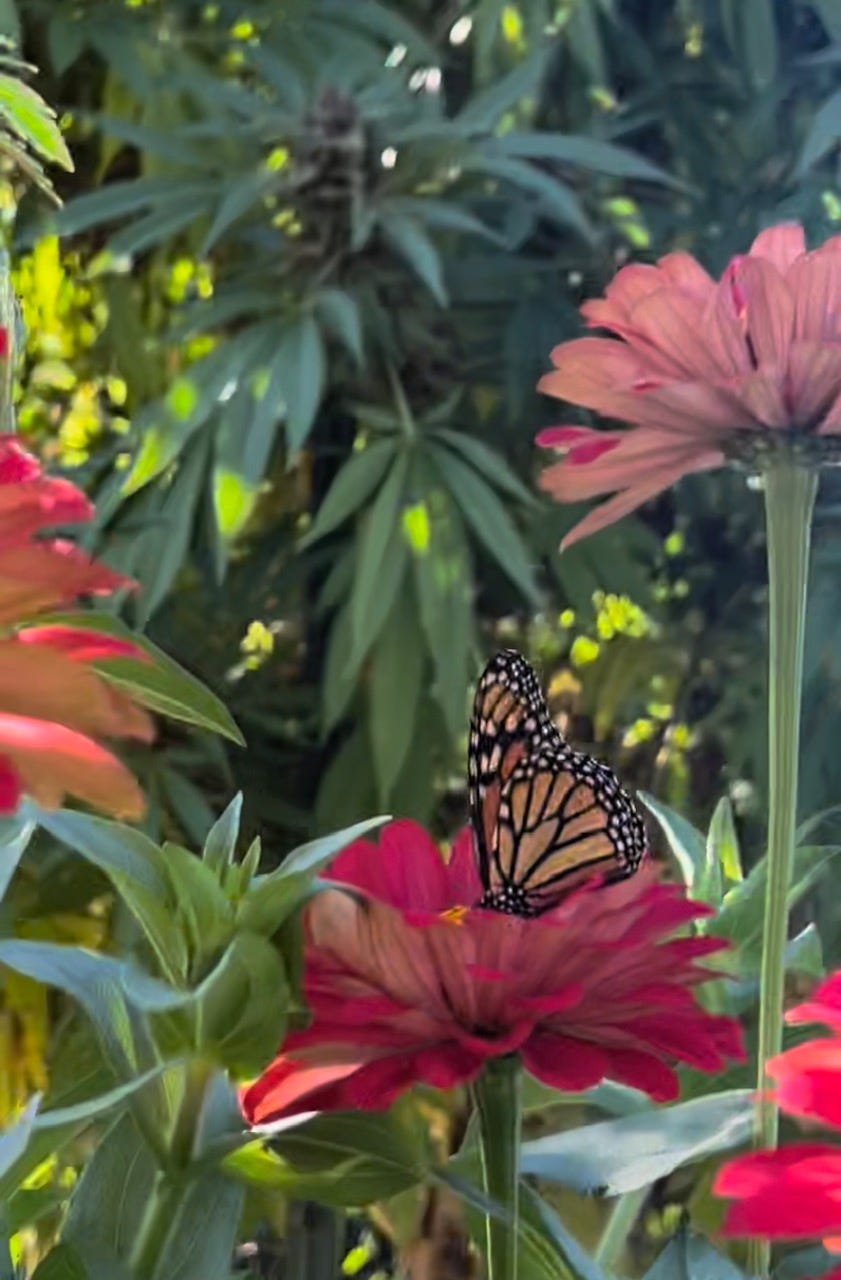
When it comes to surviving the Cannapocalyse, remember that the act of destigmatizing cannabis, and making it accessible to the masses, involves going up against the most evil institutions in existence, namely the pharmaceutical industry and the prison industrial complex, both of which are synonymous with the government at this point.
Giving people access to a healing medicine we can grow ourselves is threatening to the pill-pushing pharmaceutical industry, just like decriminalizing cannabis is threatening to the prison industrial complex. What would America’s for-profit prison business do without its main source of inmates?
Everything that weed represents threatens the systems of power that rely on humans believing in the illusion that we need them for safety and survival.
No one said pioneering an industry around a plant mired in racial, social, and political abuses would be easy, but I think we lose sight of the uphill battle advocates face and how much we’ve already overcome.
There is this notion floating around, especially in California, that this (albeit extremely) rough patch is somehow the end of the cannabis industry. In reality, it’s just the beginning.
After the last day of Mj Bizcon, we left Vegas, speeding fast into the white salt nothingness of Death Valley to unwind in the deep desert mineral springs.
As the city shrunk into the rearview horizon like a mirage I never wanted to see again, I left my fatalism there with it. Armed with a new perspective, I resolved to never let the Cannapocalyptic lens of tunnel vision eclipse what the birds see, which is a big, bright green valley of weed stretching all over the world.



